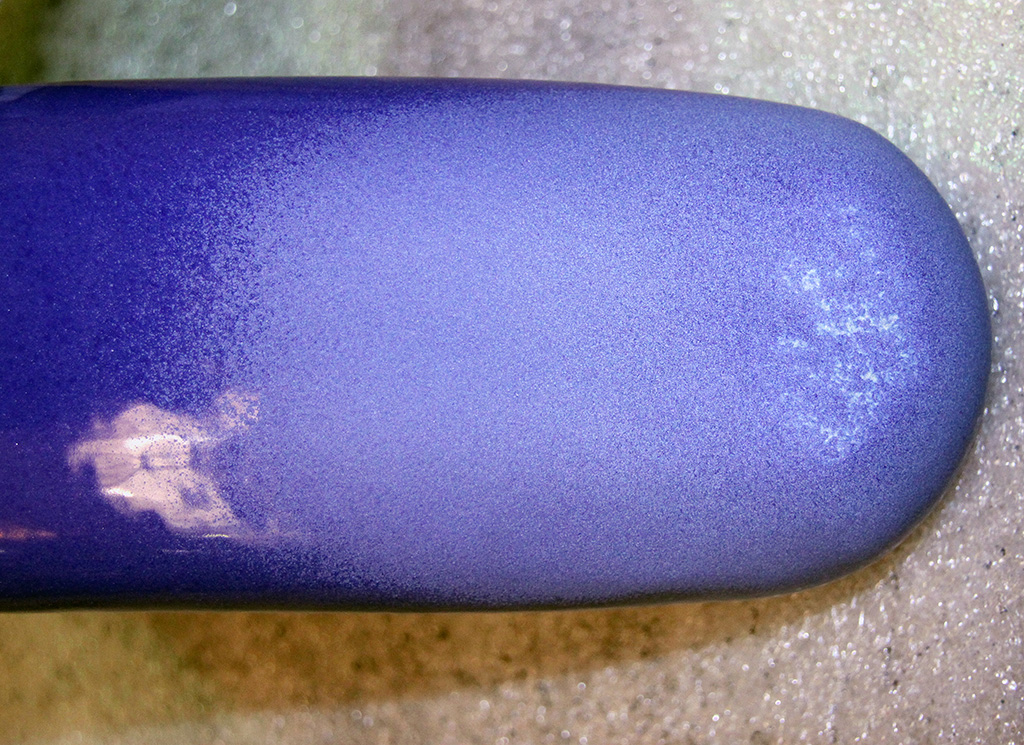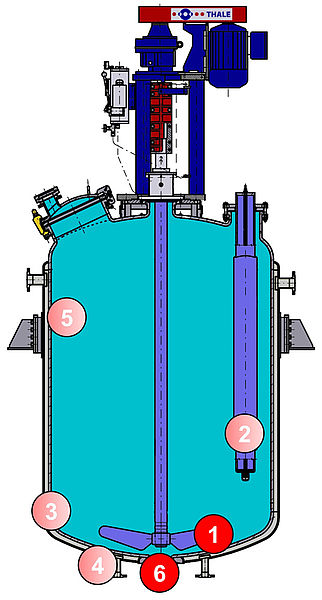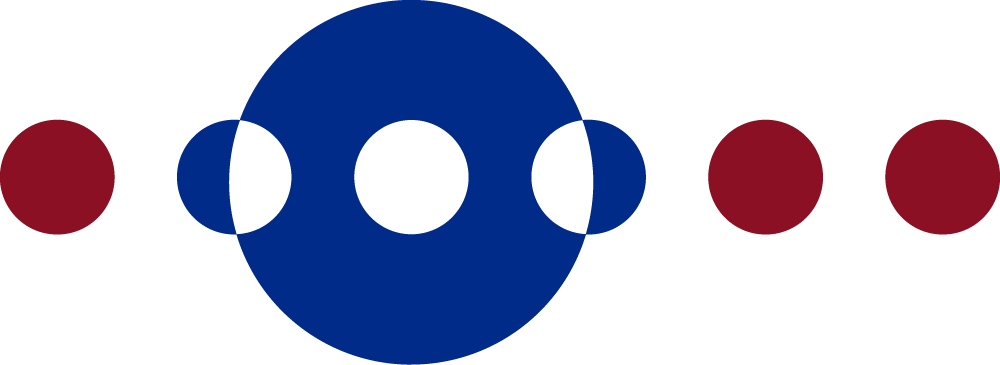Chemical corrosion
Glass lining removal by chemical corrosion is based on different mechanisms of action in acid media and alkaline media.
Technical glass linings are highly resistant to acids because where glass lining corrosion by acids occurs, the alkali metal ions of the glass lining are exchanged by protons of the acids. In this way, a corrosion-inhibiting silica gel layer is formed by part of the glass-lining surface being decomposed. This silica gel layer prevents further corrosion-induced decomposition of the glass lining.
The alkali resistance of glass linings, however, is generally reduced, since the Si-O-Si (siloxane) bonds of the glass are destroyed by the hydroxide ions of the alkalis. Therefore, a certain ‘range’ of acid concentration and acid temperature is not, as in the case of acid attack, considered less favorable with regard to glass lining removal, but as the concentration of the solution and its temperature increases, the rate of corrosion of the glass lining increases.
To determine the durability of glass-lined equipment and components, THALETEC has developed an online tool for calculating the possible operating time depending on the attacking medium and the temperature. This tool is available to registered users on the THALETEC website
Hydroabrasive wear
In contrast to glass lining removal as a result of corrosion, glass lining removal by hydroabrasion is pronounced locally and especially at places where higher relative speeds can occur between the medium and the wall:
- At the ends and leading edges of agitators
- On the inflow side of baffles
- At the phase transition from liquid to gas space
- In the area of the brim of the lower bottom
- In the area of the outlet nozzle due to high flow velocities during emptying
Hydroabrasive wear can occur if the following constraints apply:
- The liquid in the tank contains or solids (crystals) develop during the process which have a certain hardness
- The solid suspension is moved; this can take place on stirring but also during emptying of the tank through the outlet nozzle
Chemical corrosion
Glass lining removal by chemical corrosion is based on different mechanisms of action in acid media and alkaline media.
Technical glass linings are highly resistant to acids because where glass lining corrosion by acids occurs, the alkali metal ions of the glass lining are exchanged by protons of the acids. In this way, a corrosion-inhibiting silica gel layer is formed by part of the glass-lining surface being decomposed. This silica gel layer prevents further corrosion-induced decomposition of the glass lining.
The alkali resistance of glass linings, however, is generally reduced, since the Si-O-Si (siloxane) bonds of the glass are destroyed by the hydroxide ions of the alkalis. Therefore, a certain ‘range’ of acid concentration and acid temperature is not, as in the case of acid attack, considered less favorable with regard to glass lining removal, but as the concentration of the solution and its temperature increases, the rate of corrosion of the glass lining increases.
To determine the durability of glass-lined equipment and components, THALETEC has developed an online tool for calculating the possible operating time depending on the attacking medium and the temperature. This tool is available to registered users on the THALETEC website
Always proceed cautiously!
THALETEC ABRISIST VC allows a timely reaction to glass lining wear and corrosion
It’s always a good thing to proceed cautiously – that way, unpleasant surprises are avoided
Literature
- TU Clausthal: Verschleißprüfung
- Hönig, Tobias: Hydroabrasion beim Rühren. Diplomarbeit (2013)
- Chemanager Online: Rühren von Feststoffhaltigen Medien (2012)
- Reinemuth, Jürgen: Modelling and minimization of hydroabrasive wear when mixing in glass-lined agitated tanks (2012)
- European Patent Application EP3061741
Visual Control for everything - even reglassing!
THALETEC ABRISIST VC is available for all flow-stressed components, such as:
- Agitated tanks
- Agitator shafts
- Agitating elements (turbines)
- Baffles
- Valve piston of bottom outlet valves
What is more, ABRISIST VC can also be used when reglassing the component or tank. Even equipment and components of other manufacturers can be reglassed using ABRISIST VC. Just inquire – we are happy to advise you!
Still enough time to react
Once the white glass-lining layer becomes visible, there is still plenty of time to react: first, the white layer is just as abrasion- and corrosion-resistant as the blue ABRISIST. Second, the remaining residual layer thickness is still more than sufficient, after the white glass lining is visible, to protect the component against corrosion and abrasion. So you still have enough time to plan the change of the worn component or attend to spare parts.
Measures to avoid wear through hydroabrasion
The relative velocity between medium and wall is the driving factor for hydroabrasion. Therefore, measures, which reduce the relative speeds, are the most effective:
- Reducing the speed of the agitator
- Using an agitation system with a lighter shearing action, such as the THALETEC AMT Turbine (Flyer Kxxx).
- Using Delta baffles instead of conventional baffles (Flyer Kxxx)
- Avoiding the pressurised emptying of the tank in order to limit the flow rate through the outlet nozzle.
Chemical corrosion
Glass lining removal by chemical corrosion is based on different mechanisms of action in acid media and alkaline media.
Technical glass linings are highly resistant to acids because where glass lining corrosion by acids occurs, the alkali metal ions of the glass lining are exchanged by protons of the acids. In this way, a corrosion-inhibiting silica gel layer is formed by part of the glass-lining surface being decomposed. This silica gel layer prevents further corrosion-induced decomposition of the glass lining.
The alkali resistance of glass linings, however, is generally reduced, since the Si-O-Si (siloxane) bonds of the glass are destroyed by the hydroxide ions of the alkalis. Therefore, a certain ‘range’ of acid concentration and acid temperature is not, as in the case of acid attack, considered less favorable with regard to glass lining removal, but as the concentration of the solution and its temperature increases, the rate of corrosion of the glass lining increases.
To determine the durability of glass-lined equipment and components, THALETEC has developed an online tool for calculating the possible operating time depending on the attacking medium and the temperature. This tool is available to registered users on the THALETEC website
Hydroabrasive wear
In contrast to glass lining removal as a result of corrosion, glass lining removal by hydroabrasion is pronounced locally and especially at places where higher relative speeds can occur between the medium and the wall:
- At the ends and leading edges of agitators
- On the inflow side of baffles
- At the phase transition from liquid to gas space
- In the area of the brim of the lower bottom
- In the area of the outlet nozzle due to high flow velocities during emptying
Hydroabrasive wear can occur if the following constraints apply:
- The liquid in the tank contains or solids (crystals) develop during the process which have a certain hardness
- The solid suspension is moved; this can take place on stirring but also during emptying of the tank through the outlet nozzle
Hydroabrasive wear
In contrast to glass lining removal as a result of corrosion, glass lining removal by hydroabrasion is pronounced locally and especially at places where higher relative speeds can occur between the medium and the wall:
- At the ends and leading edges of agitators
- On the inflow side of baffles
- At the phase transition from liquid to gas space
- In the area of the brim of the lower bottom
- In the area of the outlet nozzle due to high flow velocities during emptying
Hydroabrasive wear can occur if the following constraints apply:
- The liquid in the tank contains or solids (crystals) develop during the process which have a certain hardness
- The solid suspension is moved; this can take place on stirring but also during emptying of the tank through the outlet nozzle

Identifying glass lining removal quickly: THALETEC ABRISIST VC
For wearing and highly corrosive processes, THALETEC has the special glass lining ABRISIST in its scope of production. Compared with conventional glass linings, ABRISIST is characterized by excellent corrosion resistance and almost twice the resistance to wear.
Glass lining removal is usually determined by regularly measuring the thickness of the glass-lining layer (see YouTube video https://www.youtube.com/watch?v=eirB8eurIzQ). The advantage of the method is, of course, the high precision of the measurement in the 1/100 mm range. Disadvantages are, however:
- Determining the layer thickness requires the operation of the equipment
- Only random and spot measurements are possible because the expense of measuring and documenting is substantial
With the two-colored glass lining THALETEC ABRISIST VC (VC stands for Visual Control), rapid detection of the residual layer thickness of the glass lining is possible without the disadvantages mentioned. ABRISIST VC is a glass lining applied in several layers. However, an intermediate layer has a color different from the surrounding layers. The following illustration shows a cross section through such glass lining:
Based on the steel substrate, 1 to 2 base glass-lining layers are applied first. The base glass lining serves as a ‘bonding agent’ between the steel and the cover glass lining layers on it. The cover glass lining is also built up layer by layer. On 2 to 3 layers of blue ABRISIST/b, a layer of ABRISIST/w (white) is applied. This layer is again covered with 1-2 layers of blue ABRISIST. White and blue ABRISIST also have the same resistance to corrosion and abrasion.
If glass-lining removal occurs in the process, the thickness of the upper layers of the blue glass lining is first removed, whereupon the white layer is successively exposed and visible. For the viewer, the glass lining now appears white at the places where removal has occurred. By a simple visual check through the manhole opening and without inspecting the apparatus, the places where removal has occurred are clearly visible.
Even if no measured values in the 1/100 mm range are available here, the advantages of this 2-coloured glass lining for detecting glass-lining removal are clear:
- Accessing the equipment to detect the removal of glass lining is not necessary
- Even extensive glass lining removal is quickly and easily recognizable

Hydroabrasive wear
In contrast to glass lining removal as a result of corrosion, glass lining removal by hydroabrasion is pronounced locally and especially at places where higher relative speeds can occur between the medium and the wall:
- At the ends and leading edges of agitators
- On the inflow side of baffles
- At the phase transition from liquid to gas space
- In the area of the brim of the lower bottom
- In the area of the outlet nozzle due to high flow velocities during emptying
Hydroabrasive wear can occur if the following constraints apply:
- The liquid in the tank contains or solids (crystals) develop during the process which have a certain hardness
- The solid suspension is moved; this can take place on stirring but also during emptying of the tank through the outlet nozzle
The glass lining of chemical reactors can be eroded over time. This is due to two effects, which can influence and even intensify each other: chemical corrosion and mechanical abrasion (hydroabrasive wear).
This paper describes the mechanisms corrosion and abrasion and provides advice on how hydroabrasion in particular can be avoided or reduced. Finally, the paper describes how glass-lining removal on equipment and components can be recognized rapidly and early and major damage avoided.



